Discover the amazing Northern Lights in Iceland
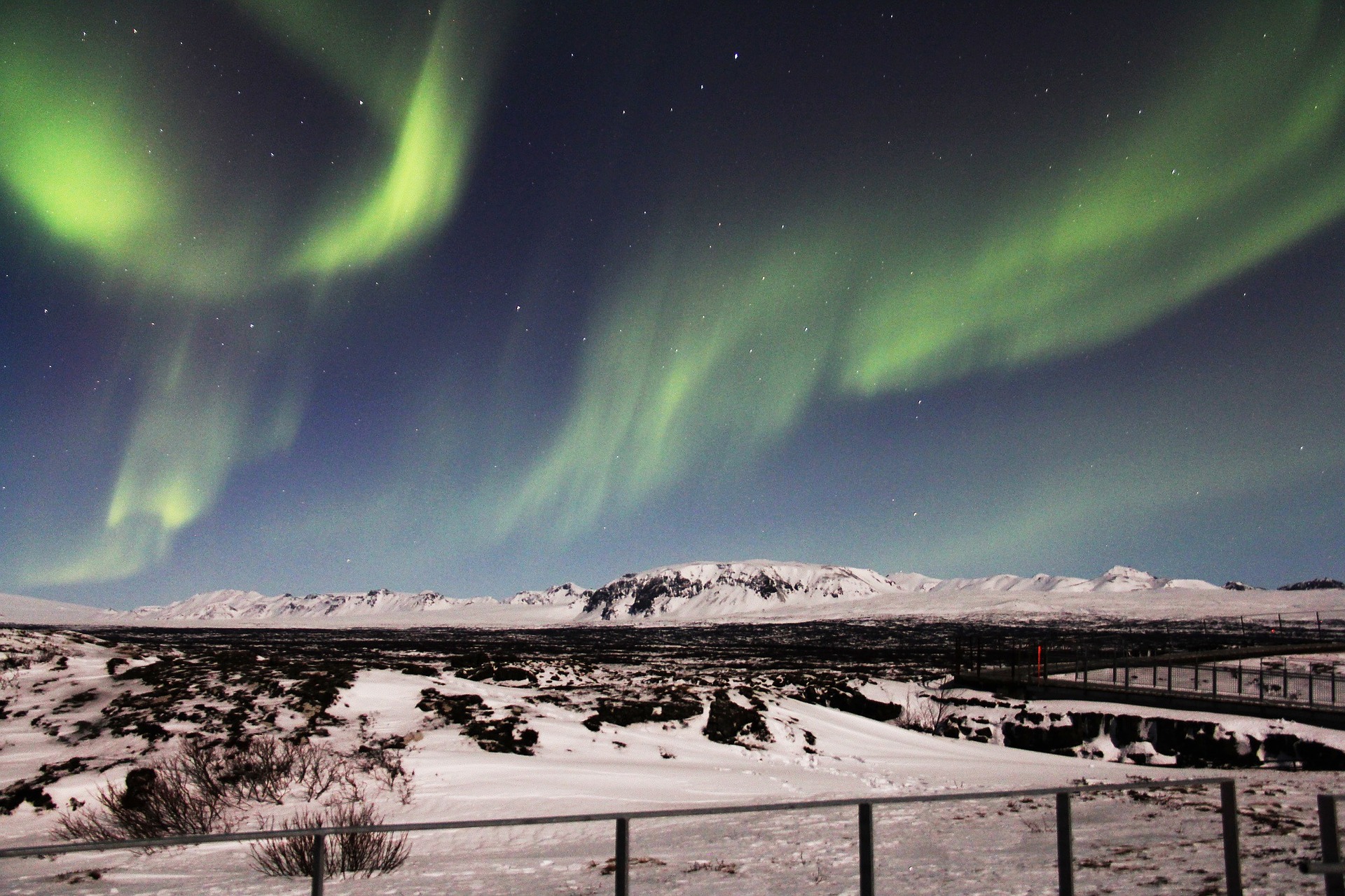
Enjoy the lights of Iceland
We know that many of you dream of the Northern Lights, and seeing them once is a wish of many people.
Many people ask how they can see the auroras in Iceland and we totally understand since you probably don’t know much about this breathteaking phenomenon.
We at Kuku Campers have been observing them for a long time, so we really know about them. Today we share with you our experience and we even have some special advice for you guys, but hush, keep that for yourself!
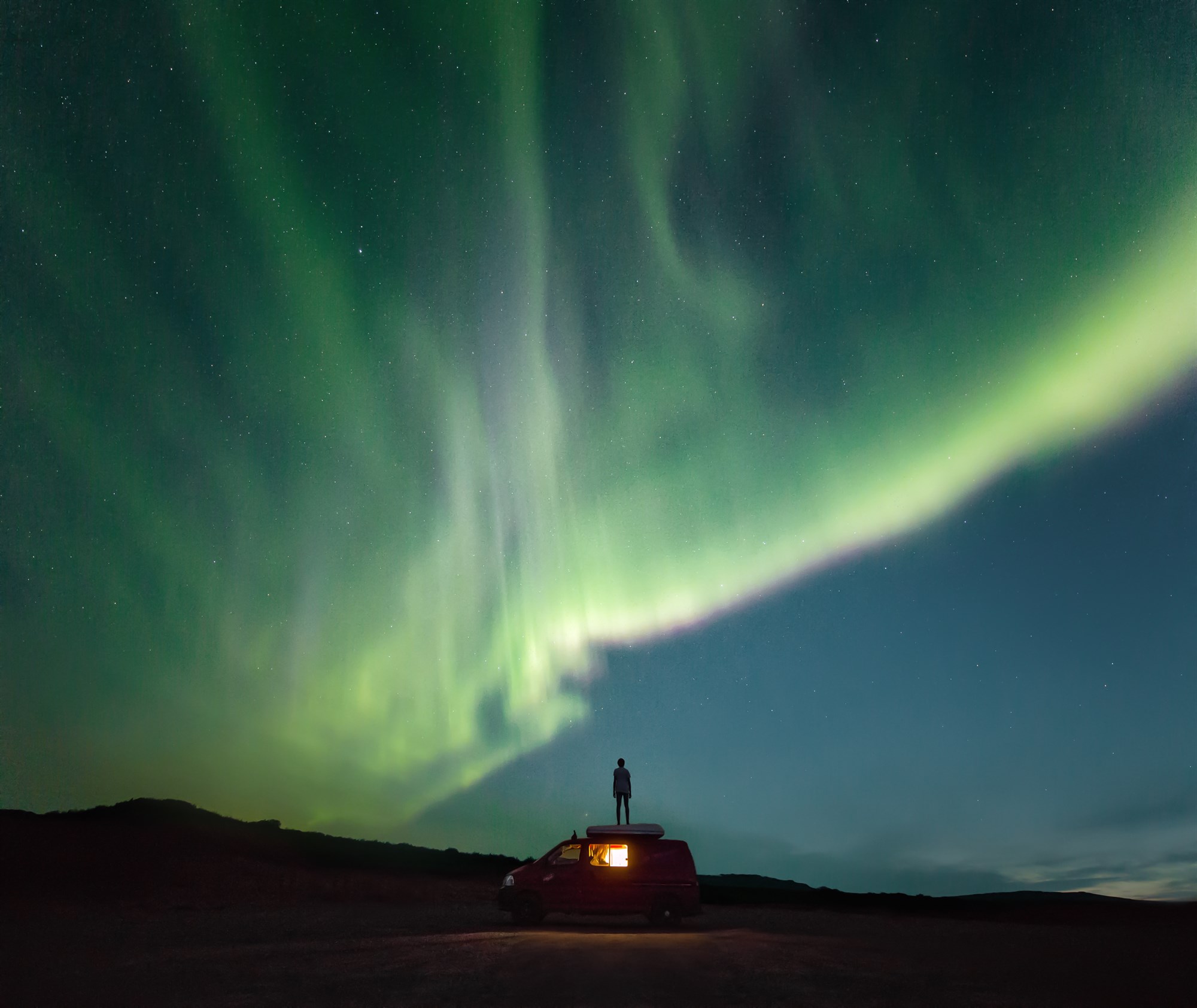 Photo: Legend has it that our vans attract the polar lights!
Photo: Legend has it that our vans attract the polar lights!
So, you are planning a trip to Iceland and wondering where to see Aurora Borealis?
We have put together a practical guide for you that will explain what they are, when they appear and above all, we will give you valuable advice based on our experience to maximize your chances of seeing one!
Follow the guide to finally see auroras in Iceland!
What are the northern lights?
Aurora Borealis or Northern Lights comes from the Latin "aurora borealis" in reference to Aurora, Roman goddess of dawn, and "borealis" which means the north wind.
They can be contrasted a bit with the midnight sun, when the sun never sets in summer in Iceland.
This phenomenon has been observed since the dawn of time and has always had a mystical, supernatural side, as descriptions can be found in some old writings of northern peoples.
For some ancient peoples the polar lights were a bad omen, and meant war and bloodshed, for others, seeing them was the sign of good fortune and abundant fishing.
In northern mythology, those lights are a dance of animal spirits. So when you see it, tell yourself that it is the spirits of salmon, reindeer, seals or even whales dancing high in the sky.
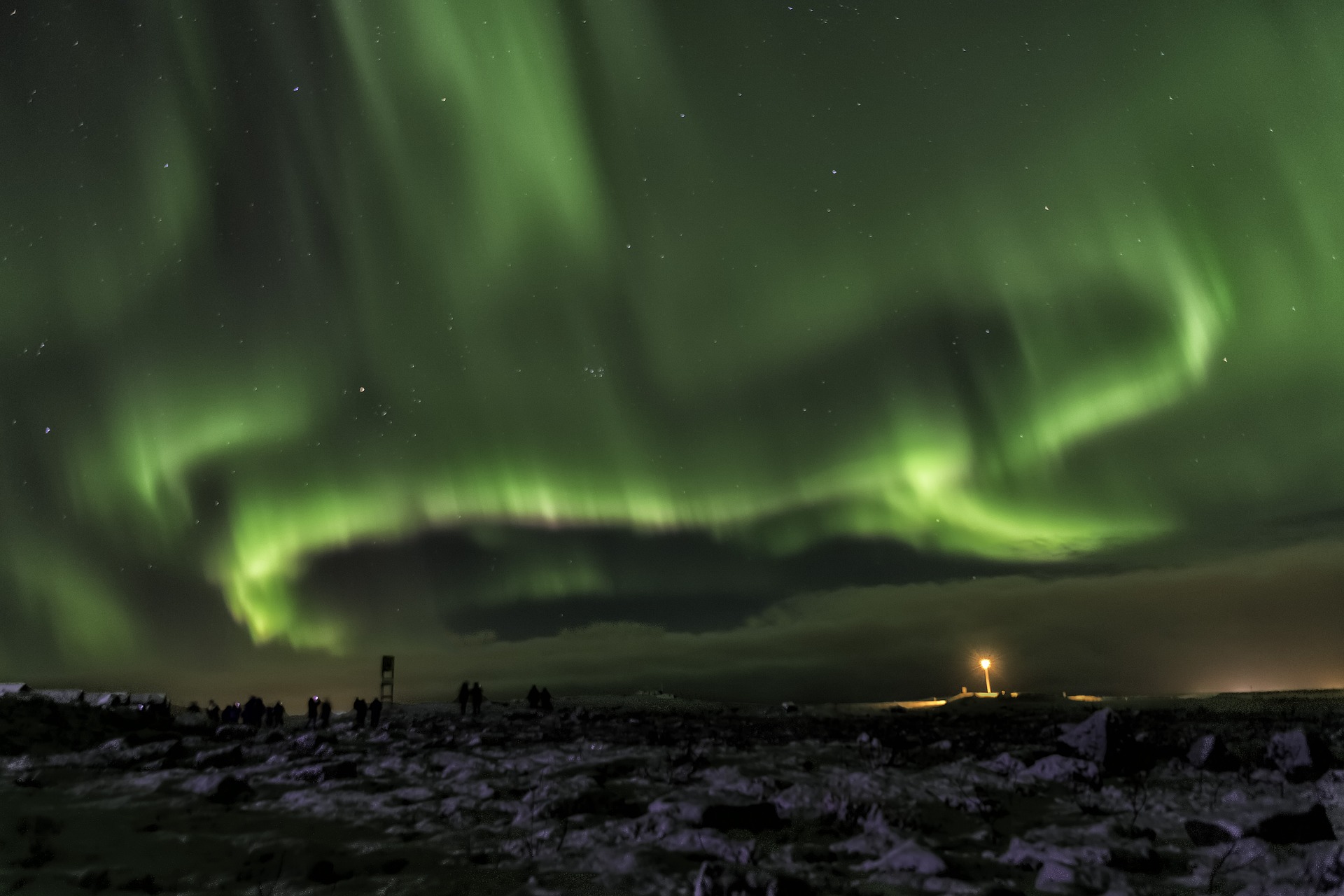 Photo: See the spirits dancing over the mountains
Photo: See the spirits dancing over the mountains
What does it look like?
These long waves of light are sometimes visible from the northern hemisphere. You can sometimes see a fine luminous line in the sky, if you’re luckier, they will cover the sky, offering you an aurora zone, and therefore a striking spectacle of beauty.
Sometimes they seem to dance in the sky, appear and disappear in a sumptuous choreography. Believe me, it is an unforgettable natural show.
Thing to say to look smart
The lights you can see in Iceland are called the Northern Lights, we know. But on the other side of the world, at the southern hemispheres, we call it an aurora australis or southern lights! Yes yes, the appear north and south of Earth :)
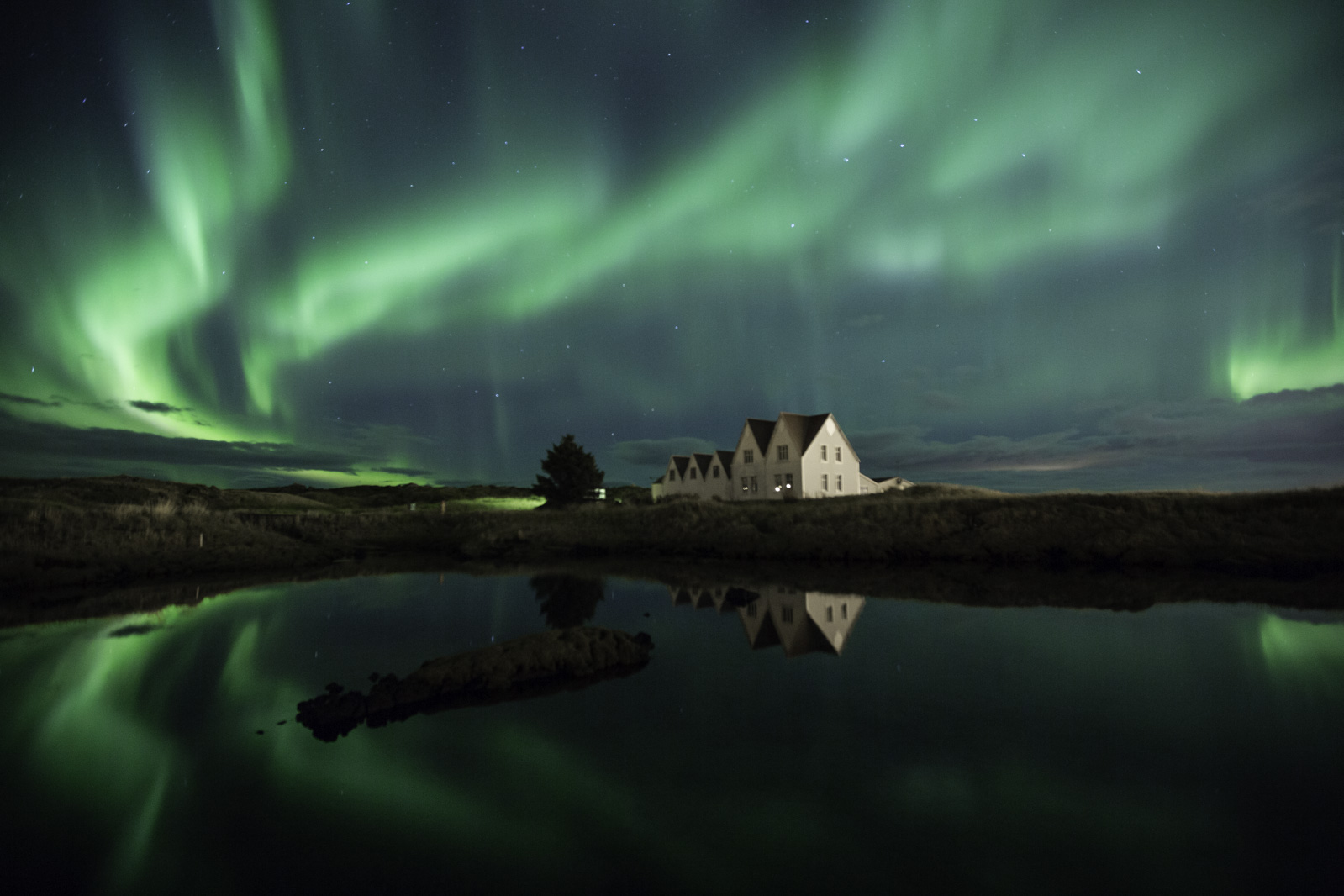 Photo: Created by KotyS Photography
Photo: Created by KotyS Photography
What causes the northern lights?
This mainly green light phenomenon is caused by the impact between charged particles from the sun and particles from the atmosphere.
These lights appear after a solar flare (or geomagnetic storm), throws towards the Earth a huge quantity of charged particles, also called solar wind.
When these particles come into contact with the Earth magnetic field, they are going towards the magnetics poles, and the north pole in our case.
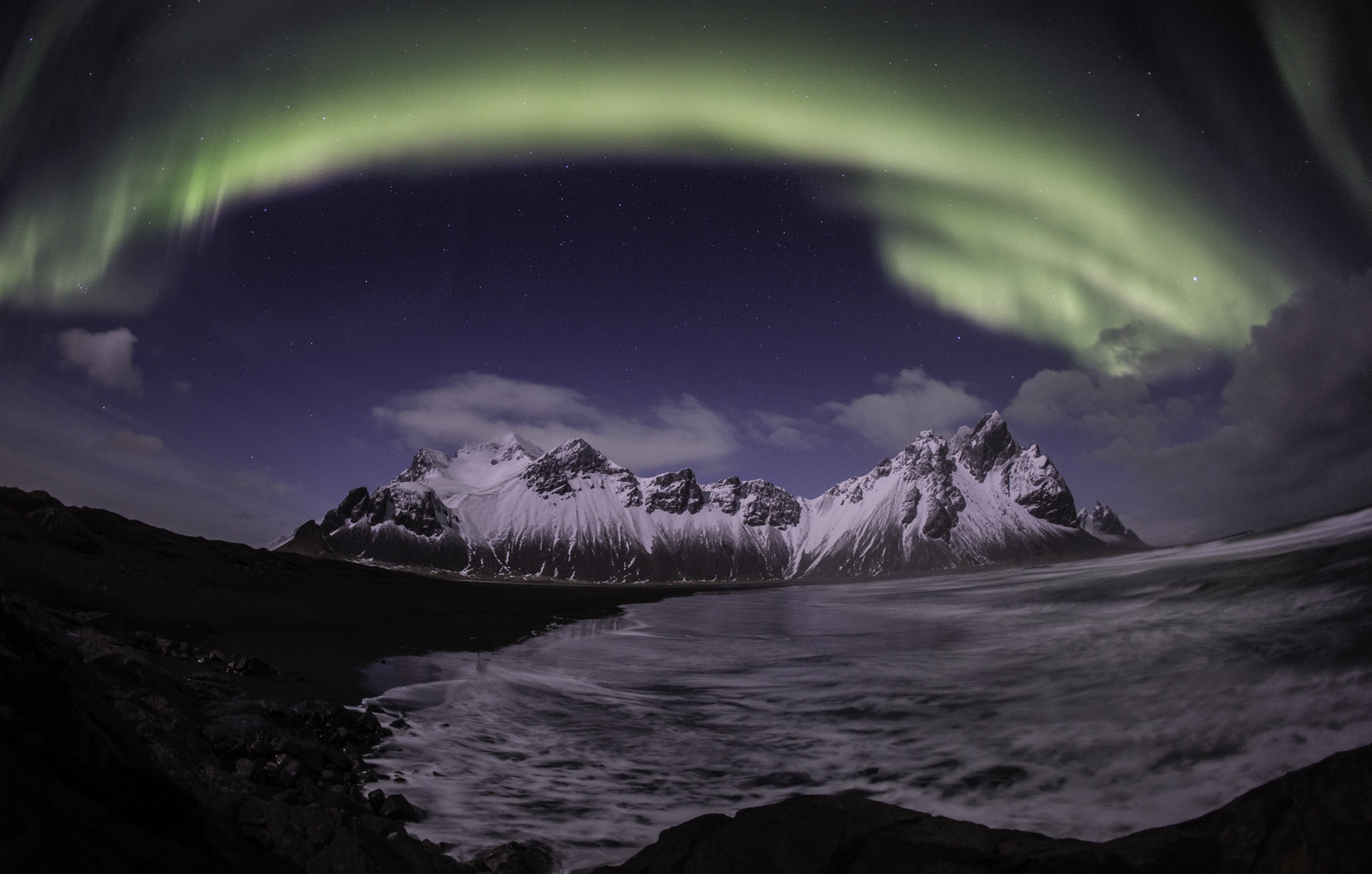 Photo: Created by KotyS Photography
Photo: Created by KotyS Photography
From there, the particles collide with the gases in the atmosphere, which creates radiation, and therefore polar ligths. This collision takes place in the high atmosphere; therefore it is impossible to see them if there is a lot of clouds.
Well, we're not going to hide it, it's less classy than in Nordic mythology. We clearly prefer the explanation given by the Vikings!
What are the best conditions to see them?
Before going to a northern lights hunt, you have to be sure to meet some conditions:
-
A completely dark sky
The first thing you need is a completely dark sky. It’s obvious you’ll tell me, well I’ll tell you that you’re right. But hey, it's important to point it out!
The lights can only be seen at night, but it doesn't mean that it is not happening during the day! It is just that the sun it too powerful, and keep us from seeing them.
That's why you won't see them during summer, because there is no hours of dark.
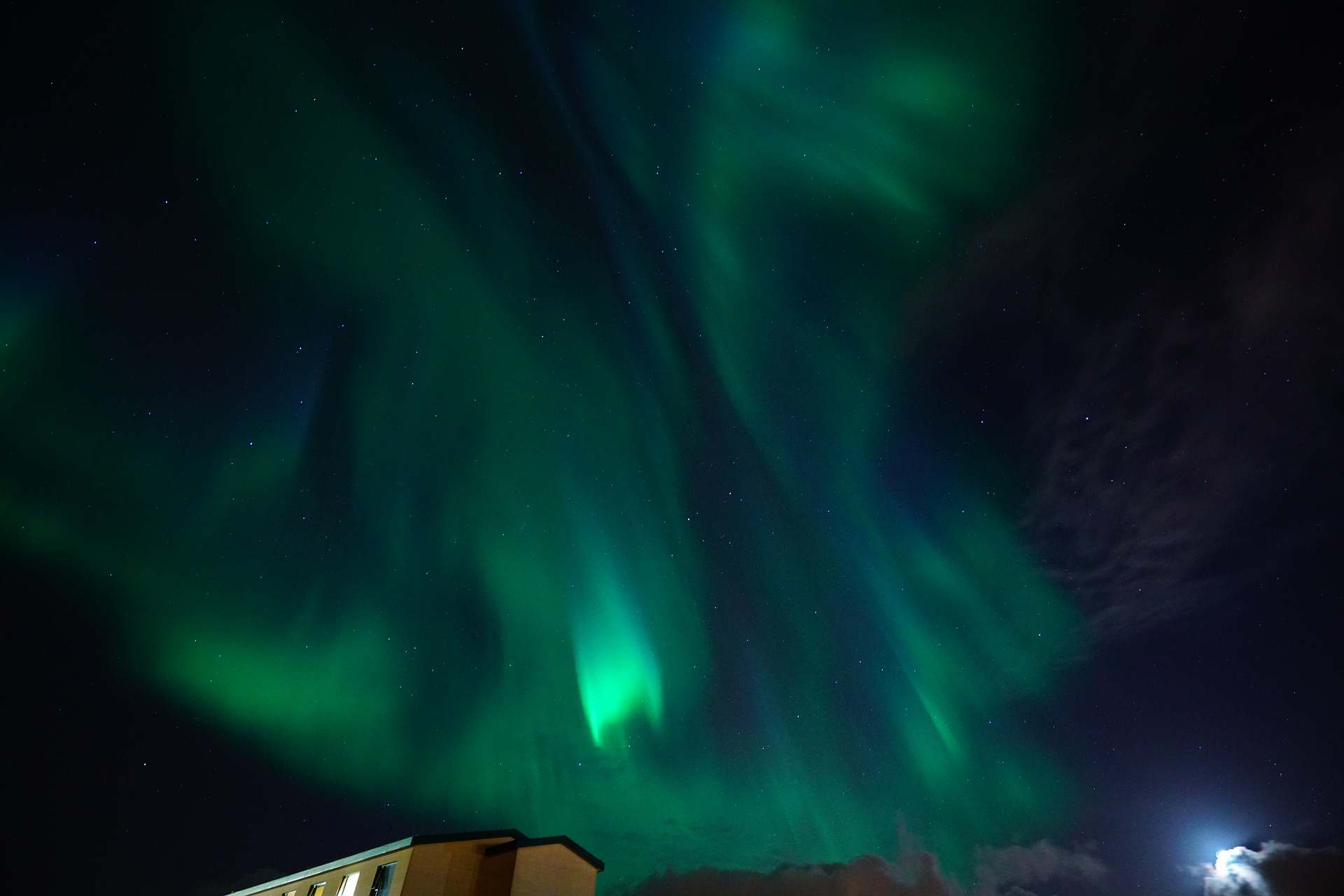 Photo: The aurora will appear more powerful in a really dark night
Photo: The aurora will appear more powerful in a really dark night
-
Clear sky
But the sky also needs to be clear, and what you mainly need is a cold night with clear skies.
A sky without clouds is very important, because the lights appear high in the atmostphere. If some clouds cover the sky, you won't see anything. However, a tiny bit of clouds is still acceptable, as long as you can see the sky partially.
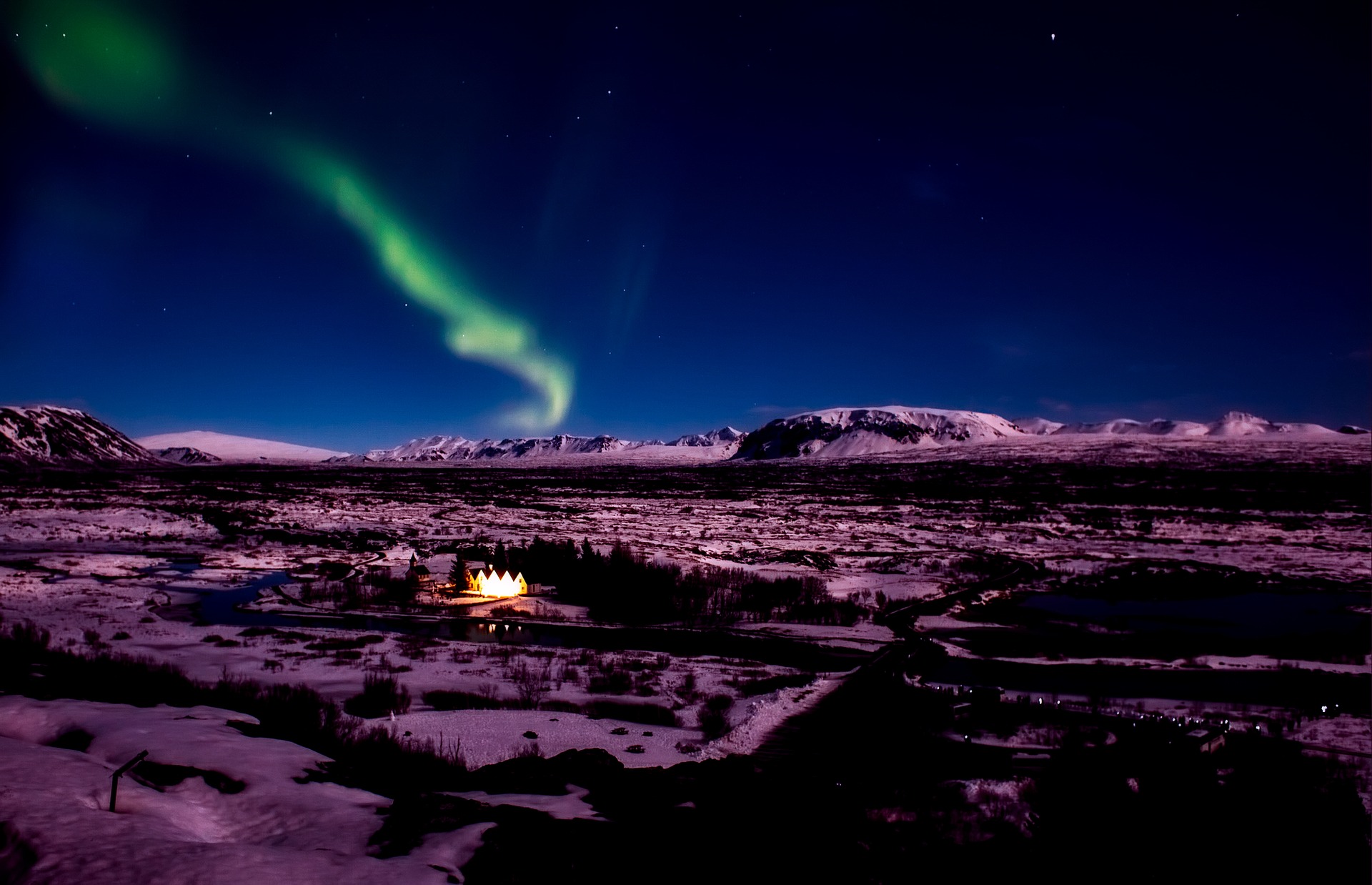 Photo: A fully clear sky will allow you to see the lights way better
Photo: A fully clear sky will allow you to see the lights way better
-
No light pollution
Another factor is light pollution. When you are in a city the lights will prevent you from seeing the sky. Therefore, you must sink into the darkness and keep away from all human activity. Avoid strong lights as much as possible, which can prevent you from seeing the sky properly.
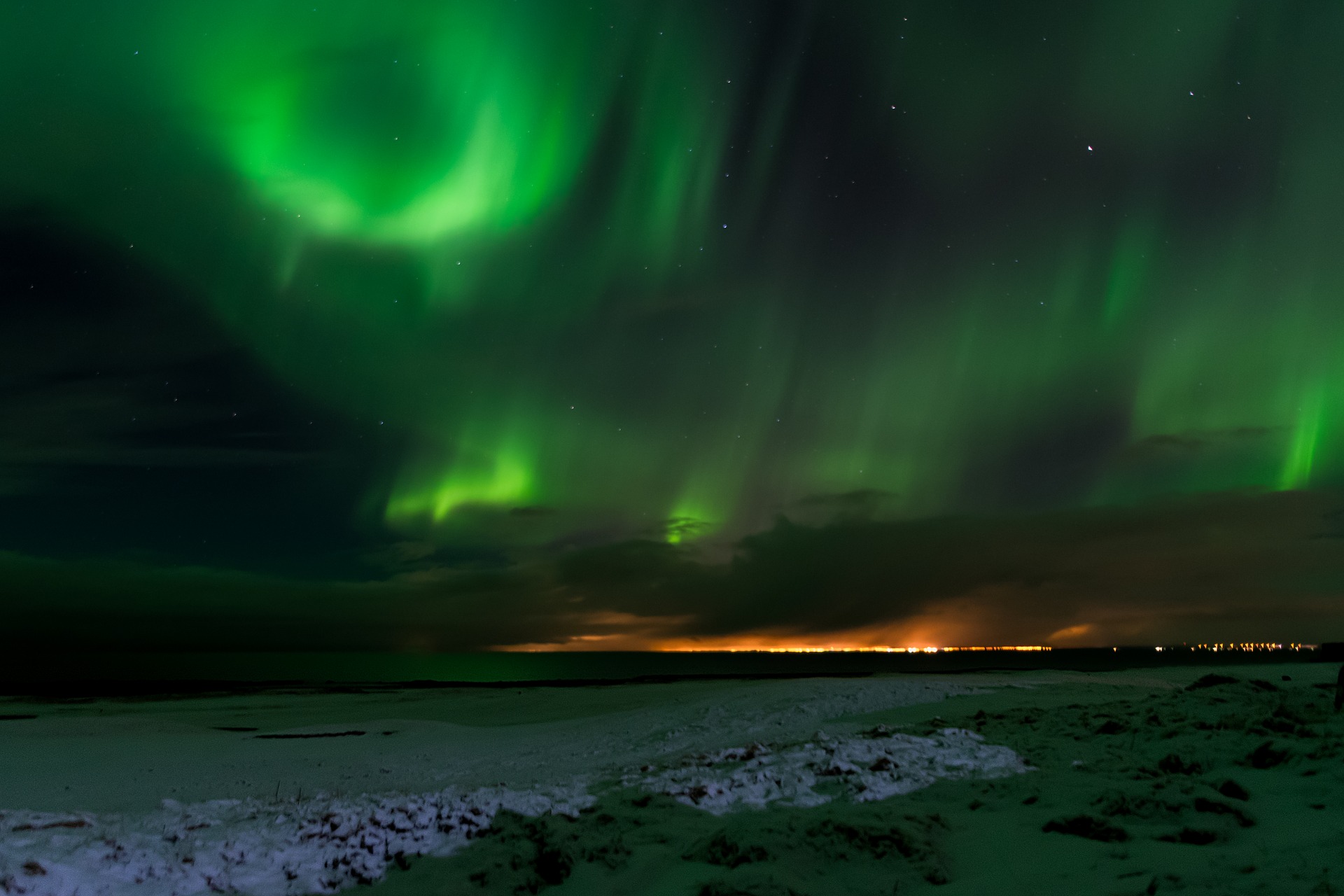 Photo: See how powerful the artificial lights of a city can be
Photo: See how powerful the artificial lights of a city can be
-
High enough Kp index
Then, you must follow an index called the Kp index. It allows you to know if the the polar lights are likely to appear. The higher the index, the more likely you are to see them, and the more numerous and intense they will be.
You can see auroras from an index of 3, on a scale from 0 to 9. Some say an index of 2 is still ok, but we don't think it is worth it, because the chances are really low. On the other hand, if the index is 5, or even 6, there are high chances that you'll assist to breathtaking auroral displays!
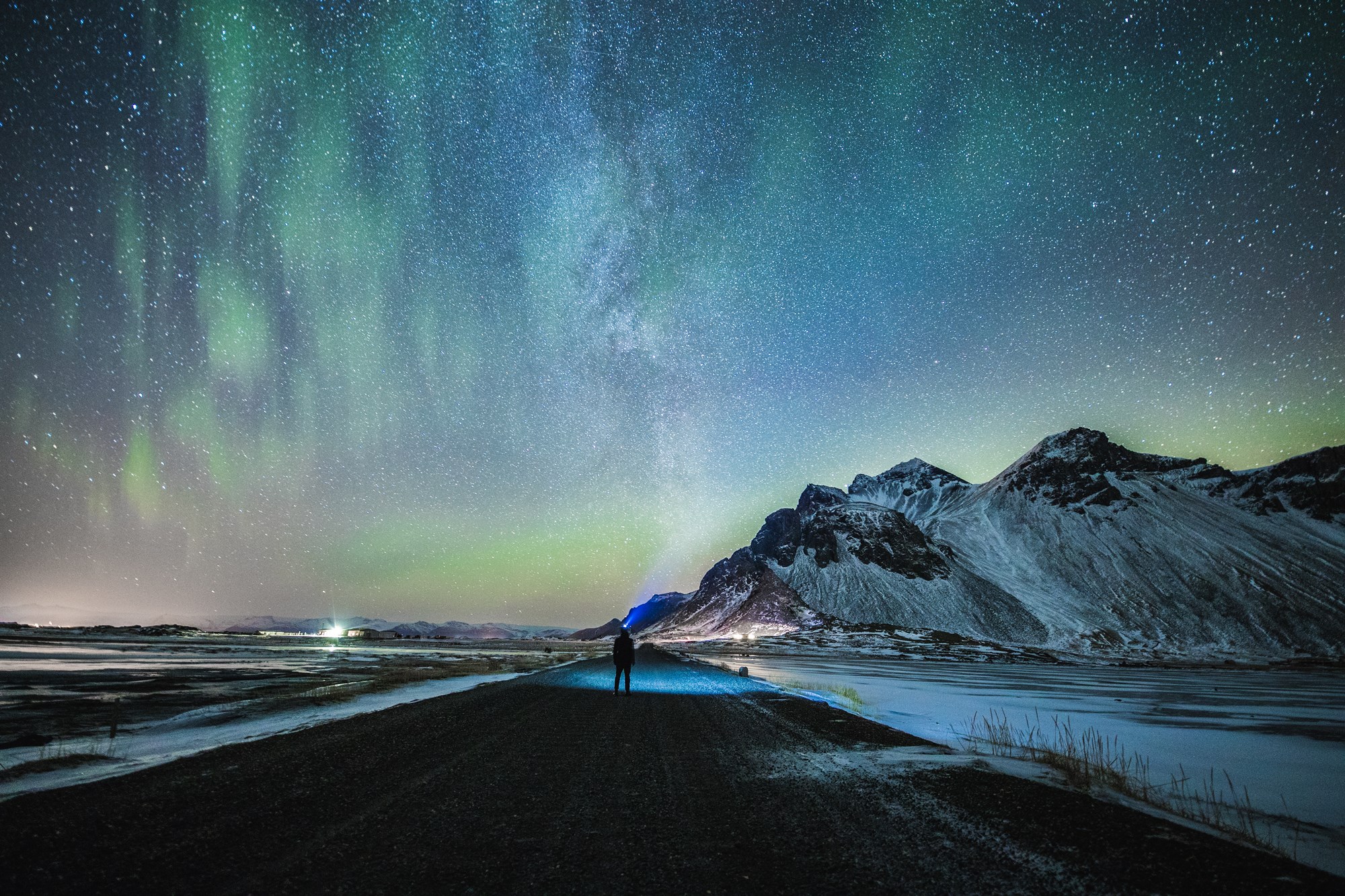 Photo: Polar lights in southwest Iceland
Photo: Polar lights in southwest Iceland
Again, this Kp index has to be combined with a nice dark night and bright sky.
Where can I see the Northern Lights?
The best places
This phenomenon occurs around the Arctic Circle. This includes various places on earth like scandinavian countries, north america, and in Iceland! And here, you can experience this phenomenon all over the country, from northwest territories to southwest.
So there's not really a best spot, the more important feel is that you like the place where you are. If you want to see the polar lights next to a waterfall, you can. If you want to be in the middle of the highlands or in the westfjords, you can. And if you want to be close to one of our numerous lakes, you also can!!
As we always say: "The best spot for auroras is the place where you feel Kuku". That's it, you don't need any more advice.
Buuut, we have some favorites places, here they are:
- þingvellir National Park
It is part of the Golden Circle, it is a magnificent natural park, and a very good spot!
This park one of the most popular places of Iceland. All you have to do is to spend the night at the Thingvellir campsite. This campsite is quite in the middle of nowhere so you will not be annoyed by any artificial light!
 Photo: Thingvellir National Park is a really great spot to see polar lights
Photo: Thingvellir National Park is a really great spot to see polar lights
- Reykjavik
Yes yes I’m serious there, it is possible to see the them while staying in the capital city.
I know, I told you before that you must avoid light pollution. Buuut, it is actually possible to see the Northern Lights in Reykjavik. Just ask people who are living here, they will tell you that they see them every winter.
The things is that they light have to be strong if you want to see them with you own eyes, stronger than if you were in the countryside. But you can go to Perlan, or Grótta Island, you will be a bit more far away from the city at these spots.
- Kirkjufell mountain
This mountain, located in the Snaefellsnes peninsula, has a particular shape and is a superb place to enjoy the show, see for yourself in this picture:
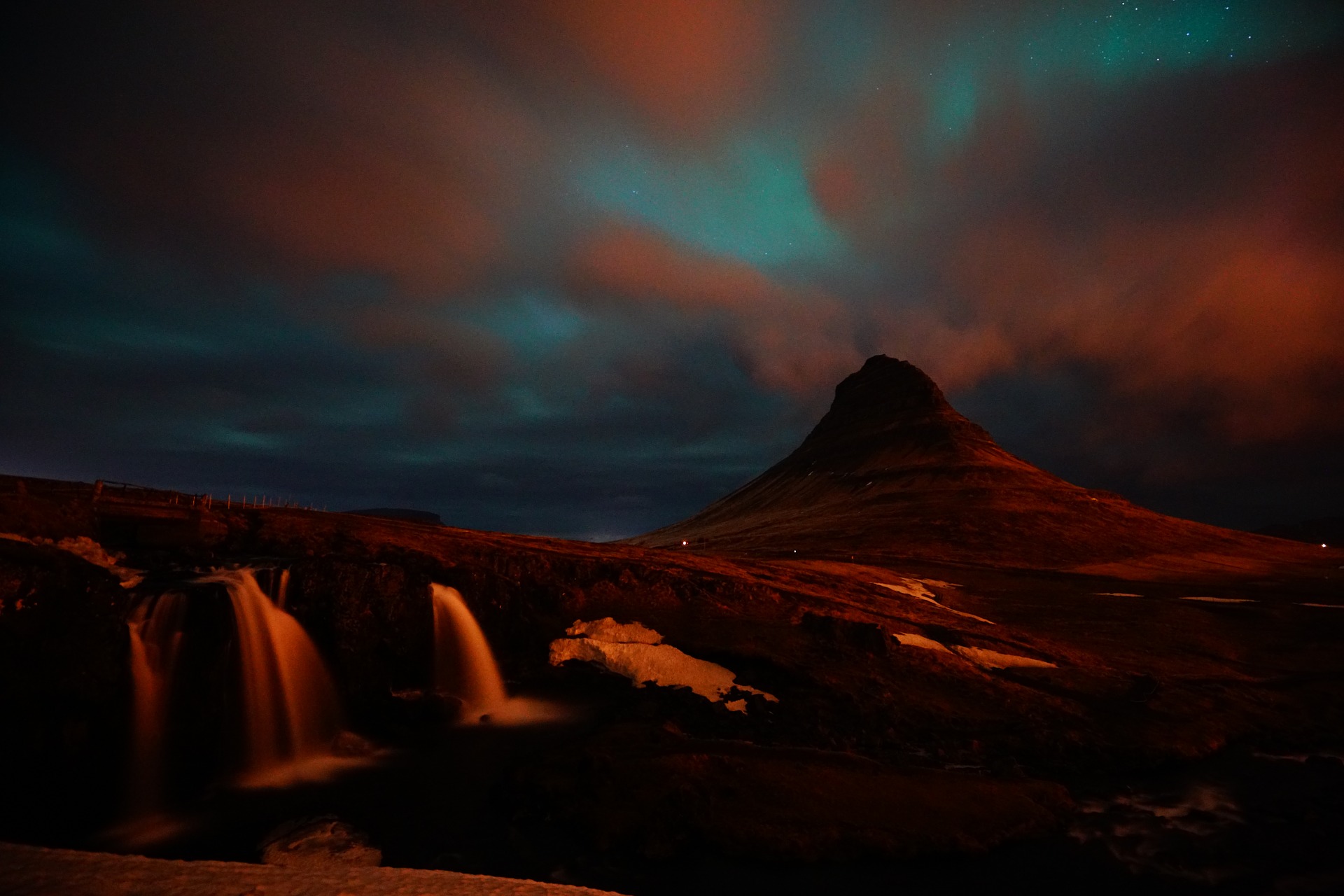 Photo: Kirkjufell mountain in Iceland with blue auroras
Photo: Kirkjufell mountain in Iceland with blue auroras
Our best spot
The best spot to chase the aurora in our opinion is Möðrudalur, it is located in the northeast of the country an at an altitude of 469 meters above the sea, this small farm is the highest farm in Iceland, there you will find some typical houses, a cafe / restaurant and, last but no least, a campsite.
This place is therefore perfect for spending the night observing the sky, in the middle of nowhere during your campervan road trip in Iceland.
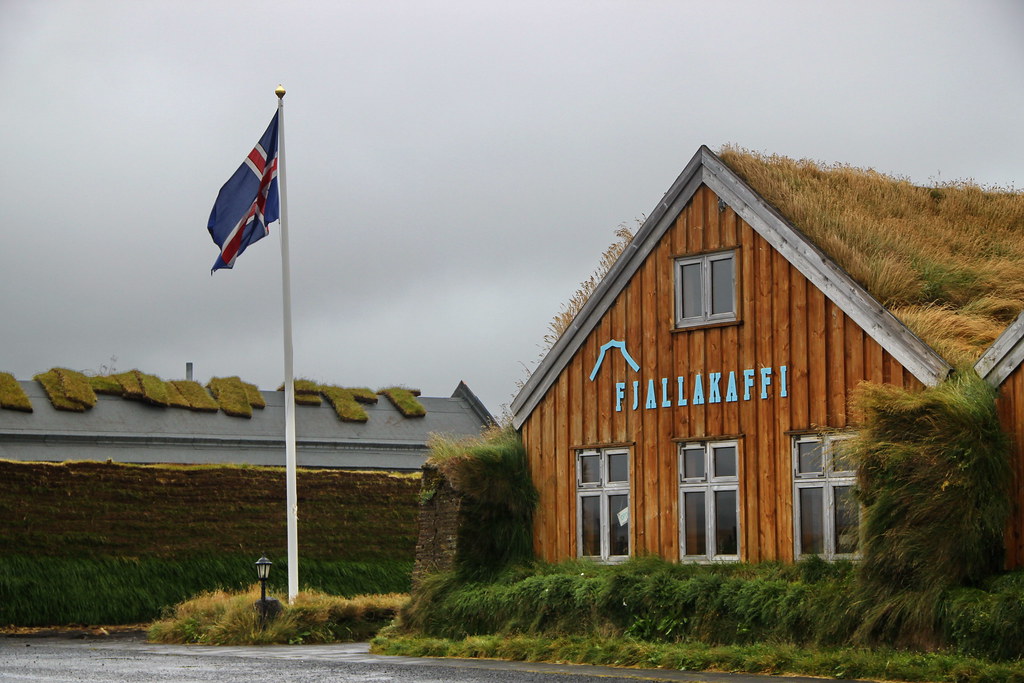 Photo: Möðrudalur - Luc Coekaerts - Flickr
Photo: Möðrudalur - Luc Coekaerts - Flickr
The best time to see the northern lights in Iceland
This is a question that comes up often, and it is legitimate, we are often asked the question of when or in what season we can hope to see this natural phenomenon. No secret, we will go straight to the point:
To maximize your chances you want to come here from November to February.
The best time of the year to see Northern Lights in Iceland is therefore winter. Indeed, the nights are long and dark, and that's exactly what you need, and it is perfect for your winter adventures!
 Photo: aurora borealis Iceland season
Photo: aurora borealis Iceland season
More generally, you are likely to see them from the end of August to April. It is a phenomenon that occurs throughout the year, simply it is impossible to see them in summer since there is no darkness.
You can definitely see something even out of the northern lights season. But it is much less likely, and it may be less bright than in winter.
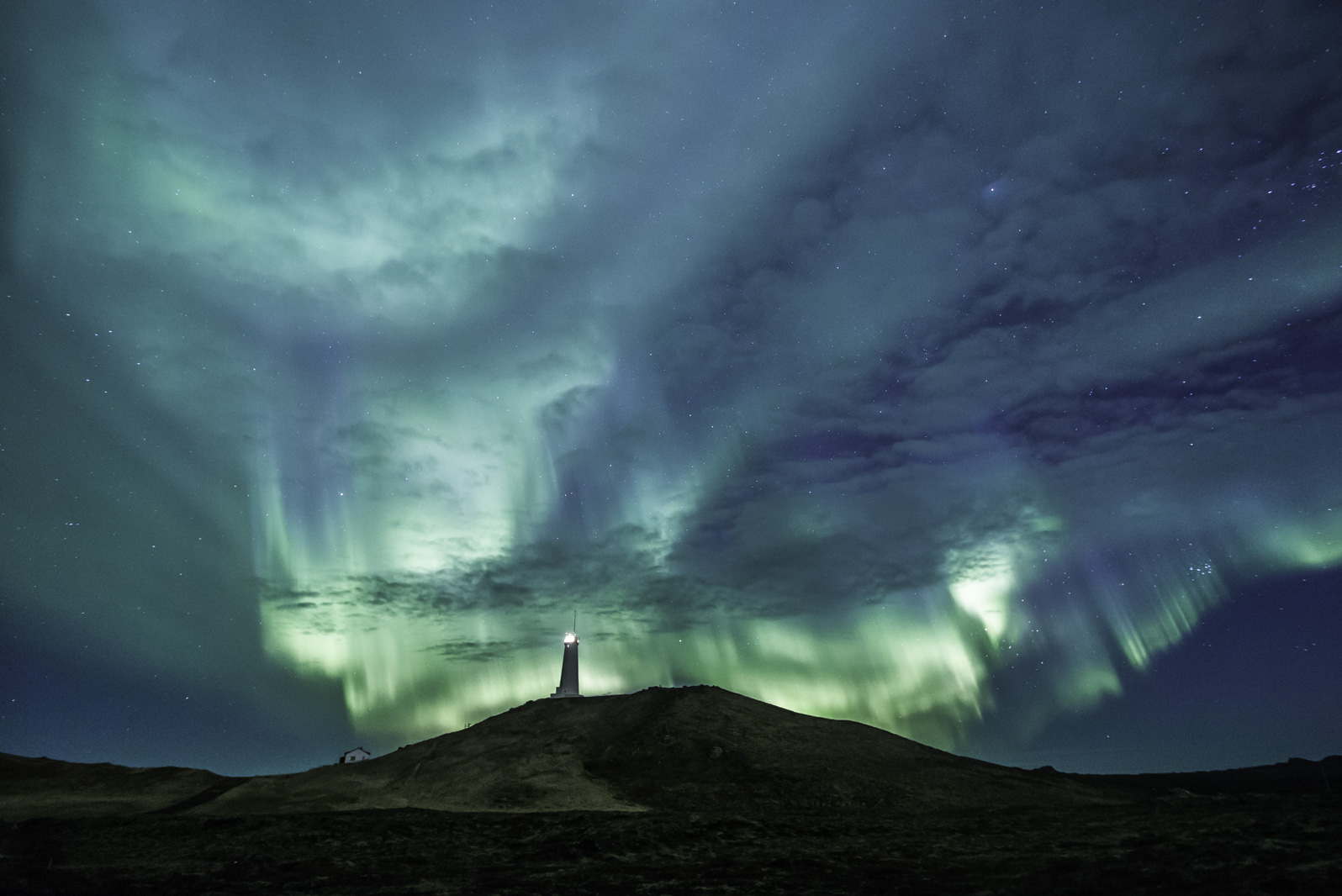 Photo: Created by KotyS Photography
Photo: Created by KotyS Photography
11-year cycle of solar activity
There is also something else to take into account than the months of the year: the solar cycle. In fact, every 11 years, the magnetic poles of the sun reverse, the south pole becomes the north pole and vice versa.
During this cycle, the activity of the sun varies, going from a minimum point to another, passing by a maximum point.
You guessed it, it is at the maximum point that the aurorae are strongest and most frequent.
In December, we had just moved from Cycle 24 to Cycle 25, this month marked the weakest activity in the cycle.
That is good news! This means that now the activity of the sun is increasing, and we should see more polar lights year after year.
The next peak of activity is expected in July 2025, from there it should start to decline again. It still leaves us a lot of time to make the most of the aurora!
Can we predict auroras?
It is impossible to know exactly when and where they will appear. That said, we can estimate from data collected when/where you are more likely to see them.
There are some apps for this on smartphones, they let you know in real time if you are likely to see something based on your location. For that you can download the app "My Aurora Forecast". It is quite a good app, you'll have all the information you need: the Kp Index, cloud coverage, but also an overview of the lights in the world in real time!
Otherwise, the most reliable website in Iceland is "Vedur.is", it is an Icelandic website (hence the ".is") on which you can find the weather forecast but especially aurora forecasts.
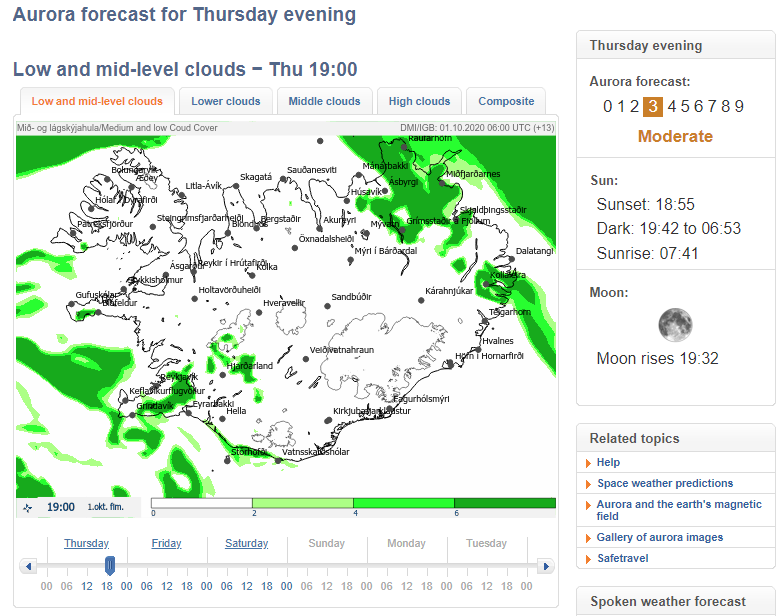
Photo: Example of a forecast on Vedur.is
You will therefore have information about the time of sunset and sunrise, on the presence of cloud or not as well as the Kp index, these are the three most important criteria.
Forecasts change regularly, and for the most reliable information, do last minute checkings.
Remember, go out on a good night, on a clear day and with a Kp of at least 3.
The different kinds of auroras
-
The calm aurora
As you can understand by their name, these auroras don't really move. They look like a veil in the sky, and can look a bit blurred. If you look at them for a long time, you will notice some changes from time to time. As their shape and intensity vary very slowly.
-
The pulsating aurora
This one is simply crazy, and I wish that you will experience it when you'll be in Iceland. This kind of aurora appears generally at the end of the display. Suddenly, it is starting to move, really, really fast. And you're just looking at it totally amazed about what's in front of your eyes.
-
The active aurora
These ones change constantly, and are composed by many parallel rays of lights. You can see them mooving, and see their shape changing, offering you a unique show. It is a mix between calm auroras and pulsating auroras.
Why do they change colors?
In Iceland, the colors are various, and they can be green, pink, red, purple, and indigo.
The factors for these colors are:
- the altitude
- the nature of the gases in the earth's atmosphere
- the intensity of the energy towards the Earth
In general, the further the collision is from the Earth, the waves will draw towards red, otherwise, they will draw towards purple (but do not worry, after several beers in Reykjavik, they will probably have the same color…).
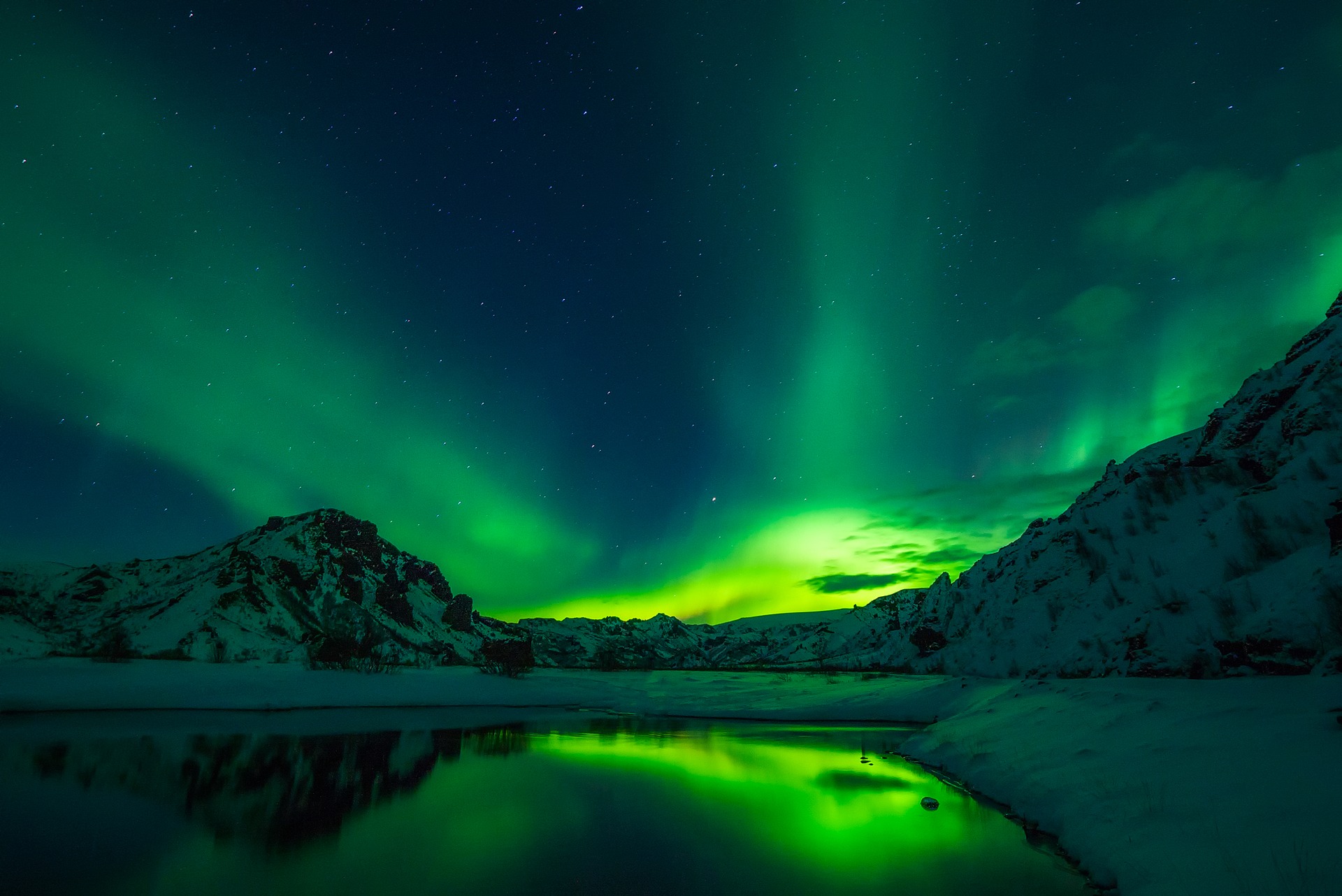 Photo: Aurora borealis above a lake and mountains in Iceland
Photo: Aurora borealis above a lake and mountains in Iceland
However, as we said, the color is also depending on the gas encountered. So the colors vary depending on whether there is oxygen or nitrogen in the atmosphere:
If the gas in the atmosphere is oxygen:
- Low altitude: the color of the aurora is green or yellow green
- High altitude: the colors draw towards red
On the contrary, if nitrogen is present in the atmosphere:
- Low altitude: blue colors
- High Altitude: purple colors
The most common color is green, but with extreme luck, you can see more than one color at the same time. If this happens to you, we want photos!
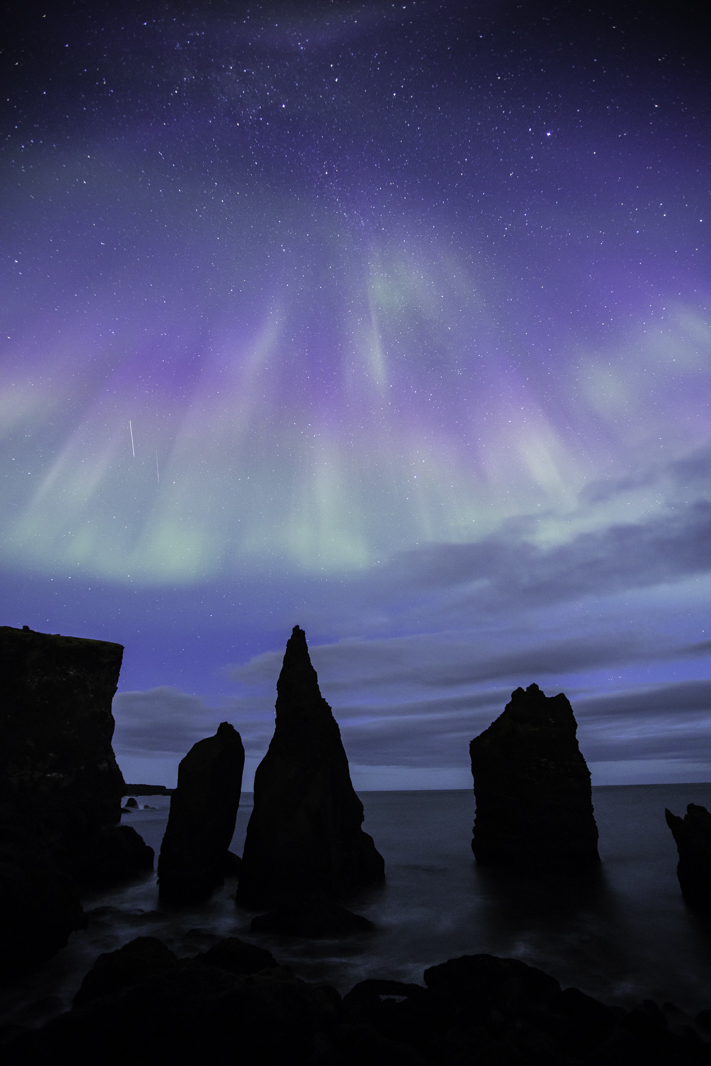 Photo: Northern Lights Colors - Created by KotyS Photography
Photo: Northern Lights Colors - Created by KotyS Photography
As can be seen in the photo, the lowest lights are green, and turn purple as you go up in altitude! Isn't that beautiful?
How to photograph the northern lights?
We see a lot of people in Iceland trying to take pictures with their phones in the hope of seeing something. No hope folks, all you get is a black image, and that's not what you want.
I myself have had the sad experience.
Let me show you, anyway, the selfie I took the last time I saw auroras:
 Photo: Aurora shot by a smartphone in Iceland
Photo: Aurora shot by a smartphone in Iceland
We see nothing at all!
So here's what you'll need if you want to take great photos:
- A good camera
- A tripod
That's all! (maybe also suitable clothes, you can see our article on the right checklist for Iceland)
At Kuku Campers, we are not photography experts, we just try to prevent you from being disappointed once there, the same photo as mine in your phone.
And here's a photo taken by a good camera:
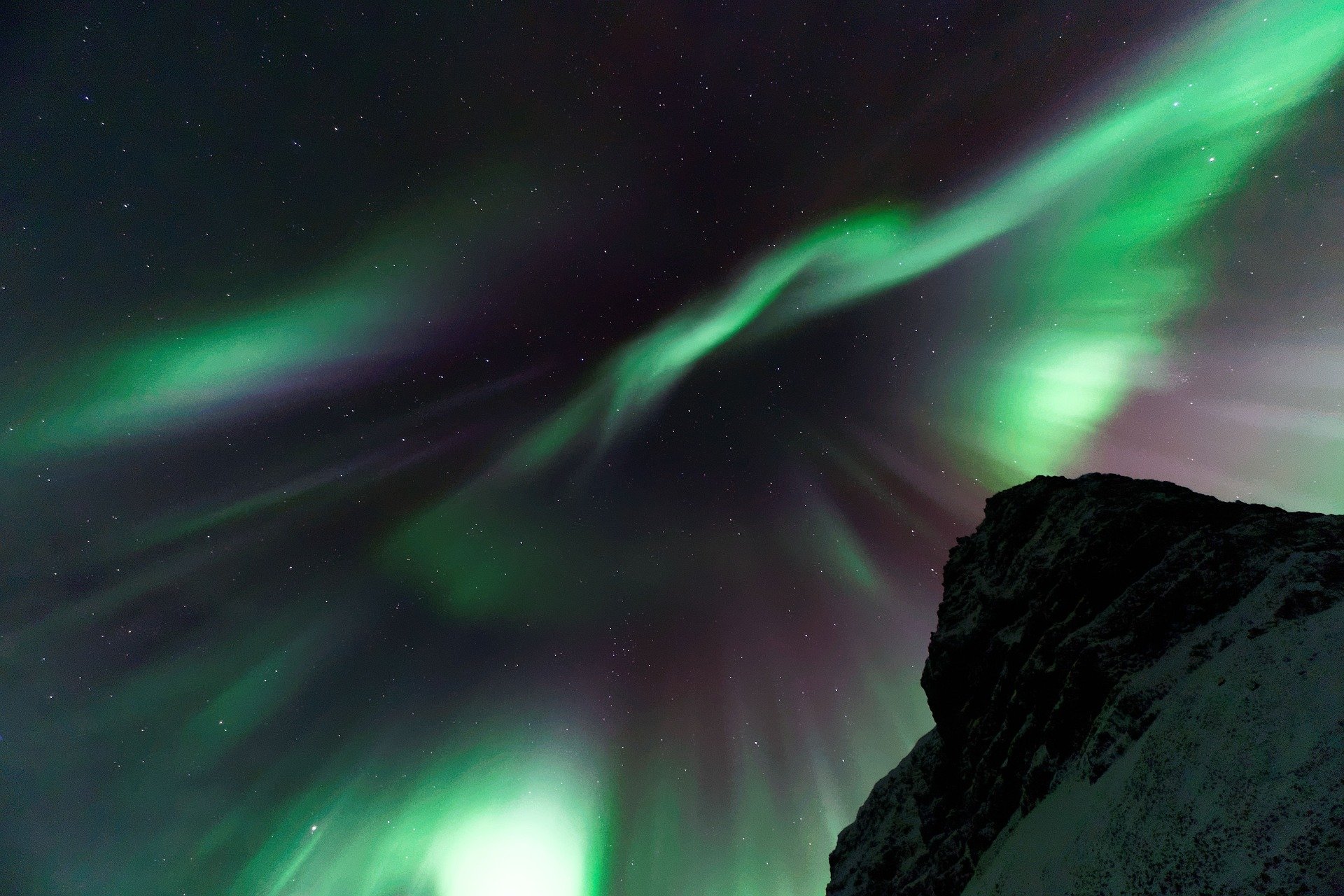 Photo: With a camera your pictures will look way better
Photo: With a camera your pictures will look way better
So don't be a fool and bring your camera when coming in Iceland!
TO SUM UP
- The polar lights are formed due (or rather thanks) to solar activity
- They are visible from November to February, and more widely from late August to April
- Iceland is one of the best places to see them
- Plan your outings on clear nights
- Go out when it's pitch dark
- Bring warm clothes and windbreakers if necessary, the weather can be harsh!
- Avoid light pollution by moving away from towns and go into remote areas
- Follow the forecasts on the internet or on your smartphone application, the further they are in time, the less reliable they are
- Arm yourself with patience, keep smiling and don't lose faith! You will see, I'm sure!
- Northern lights tours in a super jeep can be found, and local guides will maximize your chance of seeing the light
Enjoy the light show from your Kuku campervan!
Visiting Iceland with a Kuku campervan is definitely the best way to see polar lights. You have complete freedom to stop anywhere you want for the night, and it's handy for running away from the clouds!
We will also be of great advice to you, if you have any questions please do not hesitate to ask us when you pick up your van, we will be happy to help you!
Follow there simple rules to increase your chance to see auroras:
- Rent a Kuku Campers van (self-promote!)
- Follow the weather forecast and the Kp numbers on Vedur.is
- Determine the places you have to go based on the Northern Lights forecast
- Find a campsite near the location you have chosen, for more information on campsites in Iceland, it's here.
- At nightfall, keep your eyes open, they can appear at any time.
- Do not hesitate to take pictures and send them to us! (again, take a camera because you won't see anything on your phone)
Last word of advice, take advantage of this moment of calm, in the middle of the night, to completely relax, and remember, if you do not see polar lights, you will still have had the chance to contemplate the magnificent Icelandic starry sky.
Don't wait and organize your visit in Iceland this winter and go for an aurora hunt!
